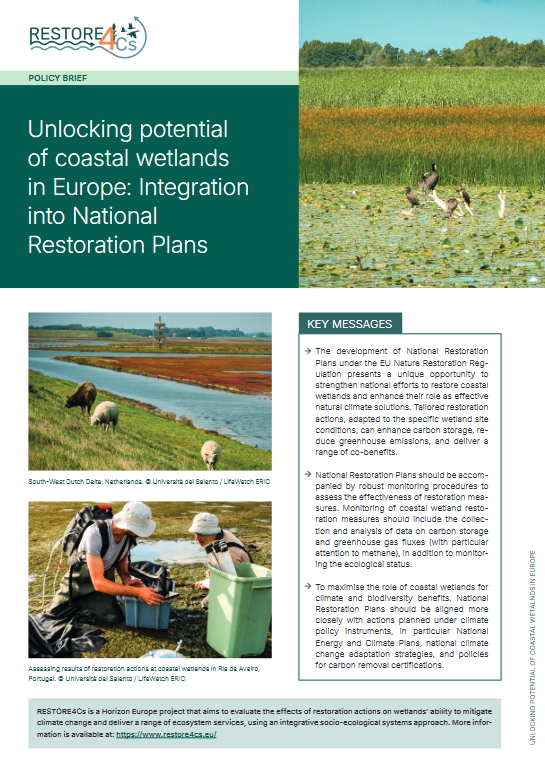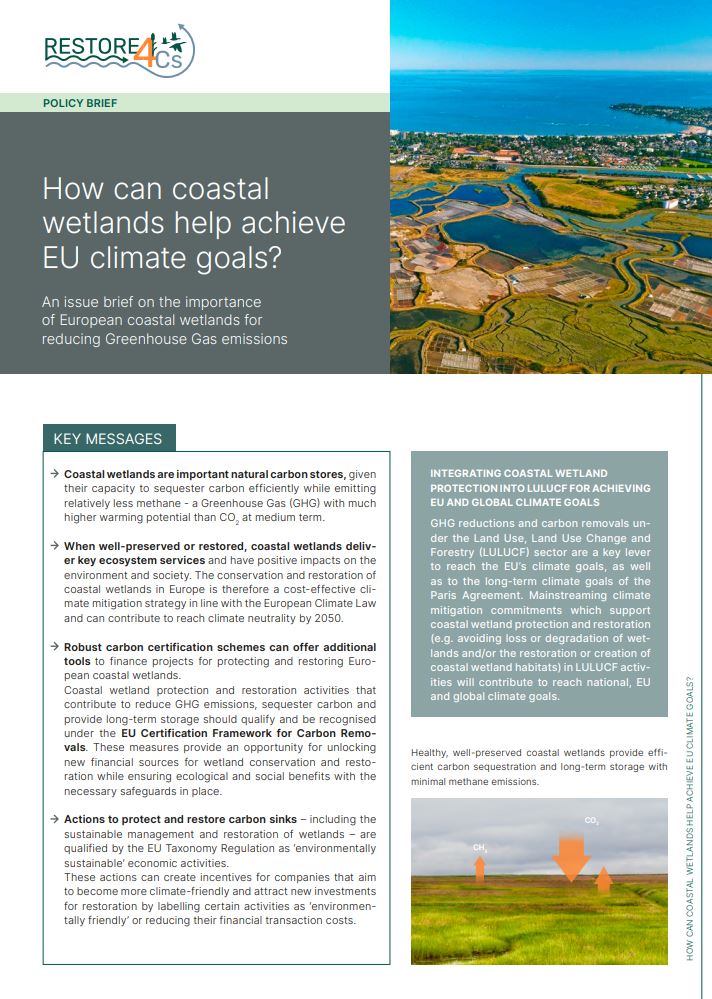Photo: Bild von Heino Schliep auf Pixabay, cover: MDPI, 2025
Restoring European Coastal Wetlands for Climate and Biodiversity
Do EU Policies and International Agreements Support Restoration?
- Publication
- Citation
Kampa, E., Elkina, E., Bueb, B., & Otero Villanueva, M. d. M. (2025). Restoring European Coastal Wetlands for Climate and Biodiversity: Do EU Policies and International Agreements Support Restoration? Sustainability, 17(21), 9469. https://doi.org/10.3390/su17219469
Coastal wetlands provide crucial ecosystem services, including habitats for wildlife, carbon storage, greenhouse gas emission reduction, storm surge and flood protection, water purification, recreation, and nature-based tourism. Their protection and restoration are therefore of growing importance to conservationists, scientists, local communities, and policymakers.
Assessing the EU’s policy framework for coastal wetland protection
This paper analyses the European Union's (EU) policy framework, alongside international and regional agreements relevant to wetland conservation and restoration, focusing on coastal ecosystems. Drawing on policy content analysis, it assesses how 36 EU policies and multilateral agreements support or limit coastal wetland restoration and conservation efforts in Europe.
Policy gaps hinder effective restoration and conservation
The findings reveal two key gaps: first, an absence of a consistent definition of coastal wetlands within the EU policy framework; and second, the limited number of explicit policy references to these ecosystems. These shortcomings restrict opportunities for their effective inclusion in action plans and undermine coordinated conservation and restoration efforts.
Narrow policy scope limits cross-sectoral potential
Most binding targets and objectives addressing coastal wetlands stem from EU policies and multilateral agreements on nature conservation, including regional sea conventions. This reliance risks overlooking opportunities within other policy sectors. While EU climate policies increasingly recognise the importance of wetland restoration, they often do so through non-binding provisions and voluntary action.
Embedding coastal wetlands in EU policy to unlock their full potential
To unlock the full potential of coastal wetlands for biodiversity and climate benefits, it is essential to embed coastal wetlands more explicitly within policy targets and to leverage emerging opportunities within the EU policy framework to further upscale coastal wetland restoration.





